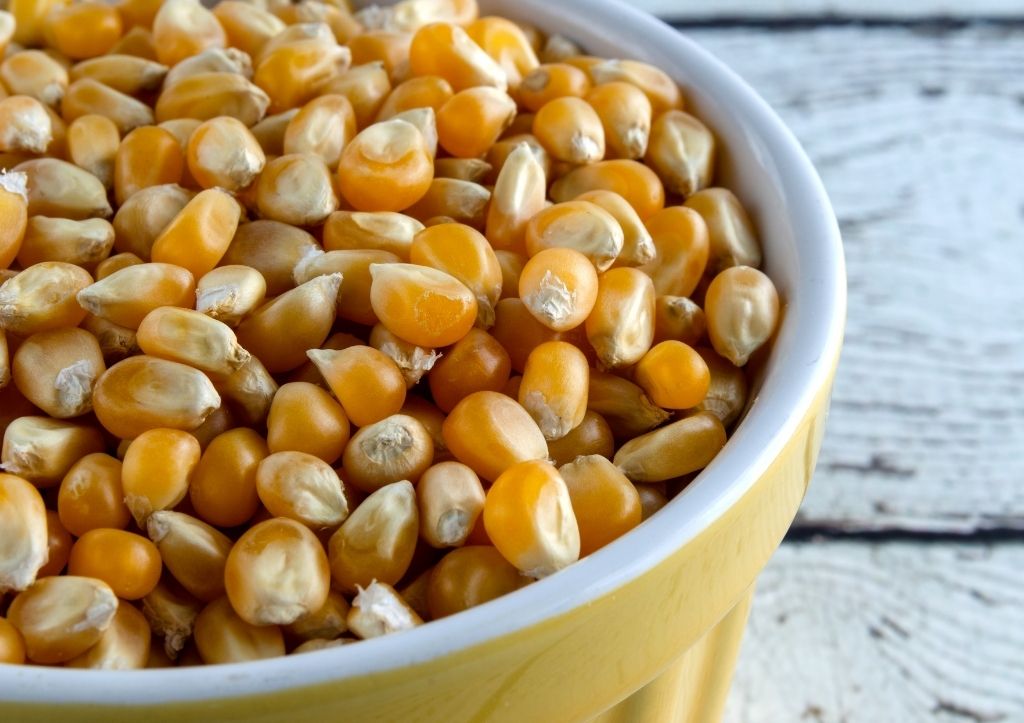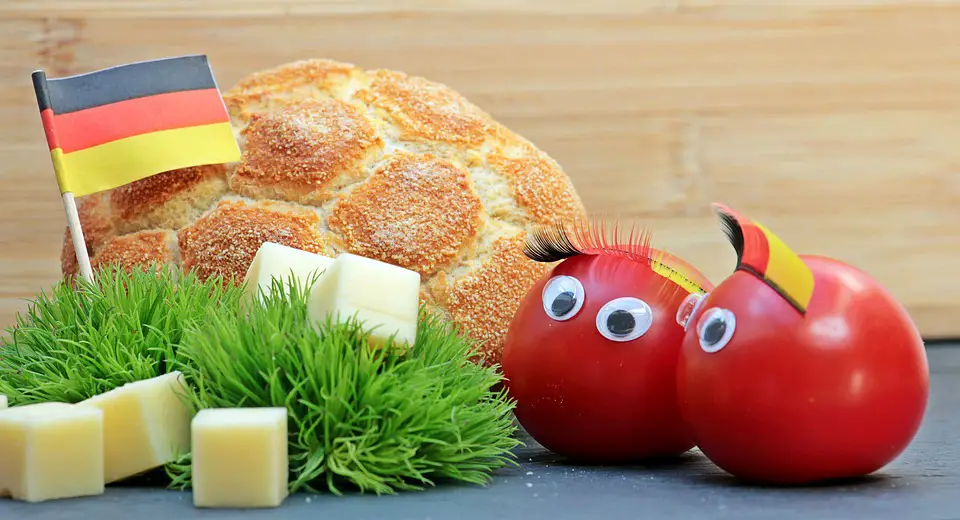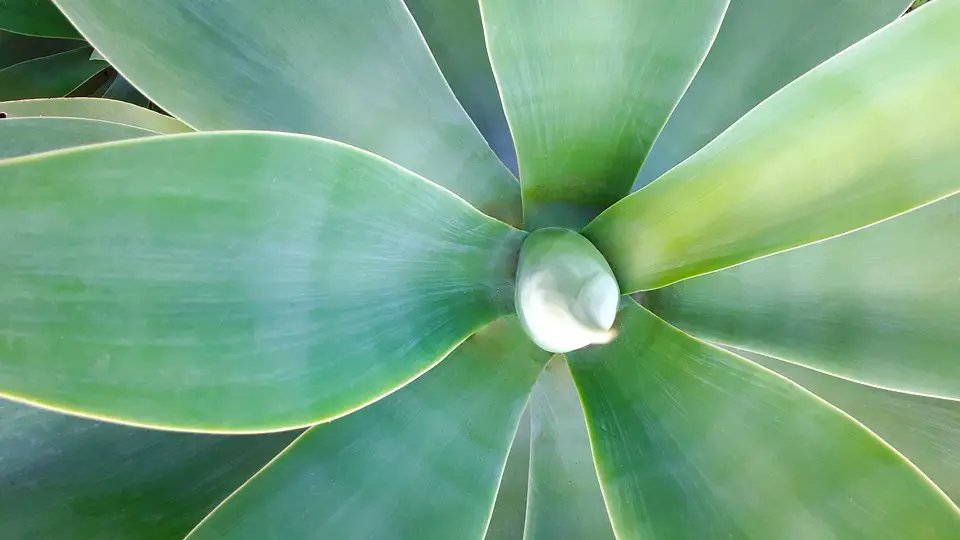If you’re like most gardeners, you probably have a lot of questions about what can and can’t be grown in your garden.
Most gardeners like to experiment with what they might be able to grow and will often try things from the kitchen cupboard seeing if they can be grown.
Among these are popcorn kernels, is it possible to grow plants from popcorn kernels?
If the popcorn kernels are fresh and have not been heated or treated then you might be able to grow plants from them if you get the conditions right. Healthy kernels should be able to germinate successfully.

Corn is a type of cereal and the kernels are the seeds within the fruits, known as cobs. Each kernel is made up of three sections:
– The pericarp (the outermost layer)
– The germ (this is where new growth will appear from)
– Endosperm which provides nourishment for the development of the embryo in the germ.
If you want to grow popcorn from unpopped corn kernels after you’ve cooked them, then you’re going to be disappointed because it’s not possible.
The heating process will kill off any potential germination that may have been able to occur.
So if you do try and grow plants from unpopped kernels remember this important point, it won’t work because you’ve killed the seed.
Now, you might be able to grow corn from the kernels before you’ve attempted to ‘pop’ them, as long as they are fresh and have not been heated, cooked or otherwise subjected to any treatment – they might germinate and grow.
[amazon box=”B07K2HXXYR” template=”horizontal”]
Where can you get popcorn kernels from?
You might have some kernels lying around in your cupboard or if they don’t contain any salt or sugar, you can buy them from the supermarket.
If you do buy them make sure that they are fresh and haven’t been heated – this will kill off any germination power that they have.
Realistically though your source of kernels or seeds should be the garden centre or another seed merchant.
By purchasing ‘real’ seeds that are intended for growing you’ll stand the best chances of success and a good crop of corn.
What conditions are required for growing plants from popcorn kernels?
Corn likes full sun and will tolerate part shade, but can’t cope with full shade.
It prefers well drained soil that’s rich in organic matter and neutral to slightly alkaline.
The kernels need to be kept moist at all times until germination has taken place, after which a regular supply of water is required to allow them to grow strongly.
They also like plenty of warmth so try and choose an area where they’ll get as much sunshine as possible during the day.
To successfully grow corn you also need to ensure that your soil is fertile and deeply cultivated, the weeds are removed and the area around the plants is kept free of small stones or debris because they might block any new growth from taking place.
[amazon box=”B078GTG845″ template=”horizontal”]
How long will it take for a popcorn kernel to sprout?
With the right conditions you should see signs of germination after about 10 days.
What’s the best way to grow corn from kernels?
You should aim to grow your corn in blocks as this will help with pollination when the plants are mature.
The plants should be spaced around 60cm apart and the blocks should be 5m-6m wide.
So if you’re growing them in your vegetable patch for example, space the seeds around 15cm-20cm apart and thin them to this spacing once they’ve grown a bit.
Use twigs or skewers stuck into the ground as markers so that you don’t damage any young growth when weeding or cultivating between the rows.
As soon as your corn is germinated and has grown above 10cm tall it needs to be thinned out again to prevent overcrowding – start pulling out some of the seedlings about 20cm from where they stand at this stage.
It’s important to ensure that you water your plants regularly during their growing season once they’ve germinated, especially if the weather has been dry.
The best time to harvest your corn is after it has turned brown and dried out on the cob but remember that’s not always going to be possible.
In some cases you can leave it in the ground for a while longer and allow further pollination from insects before harvesting – this will result in larger cobs.
Can you grow corn in containers?
Yes, but it’s not the best way to grow corn.
You’ll need a deep and wide container which will be used for the entire life of the plant.
Corn does not like to be transplanted and often the plants will die or suffer if you try to move them so, you need to plant the seeds in their final position.
Make sure that you use a good quality, well drained compost or soil and that the container has drainage holes at the bottom.
Plant several seeds per container to give the best chances for pollination.
As the plants grow you will need to watch that the containers don’t fall over with the weight of the plants.
One advantage of using containers for corn is that you can move them around to make best use of sunshine.
Try standing the containers against a wall, the heat captured by the bricks will help to keep the plants warm and the wall will also provide some support.
[amazon box=”B07N2WCXZJ” template=”horizontal”]
Should you start corn inside?
The only way that you can start corn growing inside is by planting the kernels in large containers where they will grow for the whole of their lifetime.
Unlike many other plants corn won’t transplant well so starting off in small pots and then potting on isn’t really an option.
You can, of course, if you have the space, plant corn into the border of a greenhouse and leave it to grow.
Should you feed corn?
You can feed your plant with a general purpose fertiliser from time to time during the growing season, but this isn’t essential.
In most cases your soil will already contain sufficient nutrients for the corn to take up and use as it needs them.
If you think that you need to provide a boost of energy then try using seaweed solution instead, this contains lots of trace elements which might not otherwise be present in sufficient quantities in the soil.
Is corn good for wildlife?
Corn is often used as crop for wildlife and the plants are grown and then left to benefit the local animal and insect population.
There are several reasons why growing corn is beneficial for wildlife:
– The stems provide good nesting material for birds such as wrens, blackbirds and thrushes.
– The plant also provides seeds for birds, small mammals, songbirds and game birds.
– The stalk of the corn can be used by small mammals such as mice to create dens while the foliage itself will attract insects which in turn will attract bats, hedgehogs and other insect eaters.
How do you keep corn cobs dry?
It’s not difficult to keep your corn cobs dry, all you need to do is make sure that the plant itself stays dry.
As soon as you’ve harvested the cobs rather than leaving them on the floor of your greenhouse or polytunnel, place them up high where they can’t get wet.
You can also hang them upside down in bunches from the roof or a beam if you have enough space.
This way any water that might fall on your cobs will simply drip off and won’t be able to soak into the cob itself.
What pests attack corn?
The most common pest that attacks your corn plants will be the corn earworm, a caterpillar which can strip a plant virtually overnight.
You may also come across trouble from corn borers and leaf miners.
In order to avoid problems with these pests you should regularly check your plants for any signs of infestation and remove any affected foliage and stems immediately.
What problems does corn have?
One of the most common problems that you will come across with your corn is called ‘ear drop‘.
This is where some or all of the cobs on a plant fail to fill with kernels properly, leaving them empty and rotten.
The best way to avoid the problem is to plant one of the varieties that doesn’t suffer from it.
Another common problem that you may come across with your corn is called ‘white smut’.
This is where spores grow on the tassels of the plant, turning them white and slightly fluffy.
The spores will also affect some of the other parts of your plant so it’s important to remove everything that looks like it might be infected.
[amazon box=”B01BLJ9UZ4″ template=”horizontal”]
What height does corn grow?
Corn can reach up to around 10 feet in height but most varieties will be much shorter than this.
The height of your plant will depend on the variety you chose and how well it has been looked after during the growing season.
You should make sure that you cut off any side shoots which appear in order to encourage your plant to put its energy into producing a good level of cobs rather than excessive foliage.
When is the best time to plant corn?
You should plan to sow your corn between March and June. This will give you plenty of time to grow a good sized crop before the weather becomes too hot during summer.
If you’re growing corn for wildlife then it’s best not to cut back any foliage once the harvest has taken place, this will give the plant a chance to provide cover and nesting material for birds throughout winter.
Since corn is such an adaptable plant it can be grown in virtually any climate so long as the soil isn’t waterlogged or too acidic.
Corn is surprisingly drought resistant and doesn’t usually need feeding once it’s established since it is a ‘creeper’ and uses the ground around it to provide additional nutrition.
What sort of soil does corn need?
Corn prefers a reasonably fertile soil with plenty of nitrogen in order to produce healthy cobs.
However, this doesn’t mean that you should use chemical fertilisers as they may burn your plants and prevent them from growing properly.
It also prefers a slightly acidic soil which isn’t too dry or too wet.
This means that you should always allow your soil to dry out slightly between watering, only giving your plants enough water to prevent wilting.
Final Words
Growing your own corn can be a rewarding and useful activity that will provide you with plenty of homegrown food.
However, it is important to remember that you need to regularly check your plants for signs of pests and pick off any infected cobs as soon as you see them.
You should also make sure that you keep your soil slightly dry in between watering and don’t feed your plants too much since this can make them grow faster than they normally would.
If you follow these simple guidelines then your plants should produce plenty of good quality corn with very little effort.




